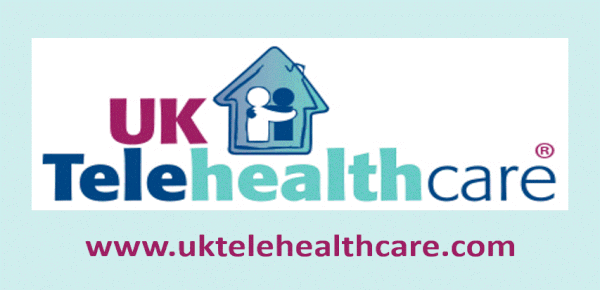Shoe drop! The long-anticipated Department of Justice (DOJ) lawsuit against UnitedHealth Group and Optum to prevent the acquisition of home health and hospice operator Amedisys was filed yesterday (12 November) in the District of Maryland. UHG’s offer to acquire Amedisys was made in June 2023 for $3.3 billion in an all-cash deal, but approval was held up in DOJ review ever since. Even with location divestitures proposed in July to VitalCaring Group to reduce anti-trust concerns with Optum’s home health operations (acquired with LHC Group), UHG remained a DOJ target. The civil lawsuit was filed by DOJ together with the Attorneys General of Maryland, Illinois, New Jersey, and New York. No timeline is provided in the release.
The rationale cited is of course anti-trust and elimination of competition between Amedisys and UHG’s Optum. “We are challenging this merger because home health and hospice patients and their families experiencing some of the most difficult moments of their lives deserve affordable, high quality care options,” said Attorney General Merrick B. Garland. The fact that the US Attorney General was quoted first in their release indicates the importance of the case to the DOJ. It’s also a race to the finish as come 20 January 2025, there will be a new president appointing a new AG immediately.
The DOJ states that both companies are “fierce competitors” and that the divestiture is insufficient. “The proposed divestiture does not alleviate harm in over 100 home health, hospice, and labor markets, which generate at least a billion dollars in revenue annually, serve at least 200,000 patients, and employ at least 4,000 nurses.” Their case is well-built in this Editor’s view. From the release:
UnitedHealth’s market share after the transaction would make the merger presumptively illegal in:
- Hundreds of local home health care markets, with an annual volume of commerce exceeding $1.6 billion annually, in 23 states and the District of Columbia;
- Dozens of local hospice markets, with an annual volume of commerce exceeding $300 million annually, in 8 states; and
- Hundreds of local markets for home health and hospice nurse labor, employing at least 8,000 nurses, in 24 states.
The lawsuit also seeks civil penalties against Amedisys for falsely certifying compliance with its obligations under the Hart-Scott-Rodino Antitrust Improvements Act of 1976 (HSR Act) by failing to produce millions of documents or disclosing the deletion of other documents. For each day that Amedisys was in violation of the HSR, DOJ is seeking a fine of up to $51,744 daily. Amedisys was originally set to be acquired by OptionCare, which does not directly compete in home health, but UHG won a bidding war.
As this Editor said at the time of the Change Healthcare acquisition win against DOJ in Federal court (and we know how that turned out long term), “DOJ has a long memory, a Paul Bunyan-sized ax to grind, and doesn’t like losing.” FierceHealthcare
 23andMe continues their long jump down to…who knows where? CEO Anne Wojcicki is minusing out 200+ employees or 40% of its remaining workforce, and fully shuttering its therapeutics development unit. The latter is running two clinical trials which will be wound down ‘as quickly as practical.’ These cuts will save $35 million annually but incur $12 million in one-time severance and termination-related costs. The much-touted therapeutics discovery unit was shut in late summer [TTA 14 August].
23andMe continues their long jump down to…who knows where? CEO Anne Wojcicki is minusing out 200+ employees or 40% of its remaining workforce, and fully shuttering its therapeutics development unit. The latter is running two clinical trials which will be wound down ‘as quickly as practical.’ These cuts will save $35 million annually but incur $12 million in one-time severance and termination-related costs. The much-touted therapeutics discovery unit was shut in late summer [TTA 14 August].
What’s left? Not much–the Lemonaid remote prescribing unit, with an entree into GLP-1 prescribing, some published studies, a new AI chatbot called “DaNA”, and a longevity service dubbed Total Health. During their Q2 FY2025 earnings call and release, revenue sank to $44 million versus prior year’s $50 million (-12%)–slightly from Q1’s $40 million–operating expenses reduced 17% to $84 million versus prior year’s $101 million, but the company remained firmly in the red with a GAAP loss of $59 million, 21% less than last year’s $75 million and reduced versus Q1’s $69 million loss. The board, as previously noted, now consists of three financial non-healthcare people, replacing the seven who resigned. Meanwhile, customers wonder about the security and use of their genetic and personal information [TTA 8 Nov]. Release, AP, Healthcare Dive
Another telemental health unicorn, Lyra Health, laid off 2% of staff in a restructuring. 77 people on non-clinical operational teams were released. Some may receive severance for 12 weeks with health benefits, according to one of the anonymous released. Noted in the FierceHealthcare article are reported changes at Lyra, including larger provider caseloads demanded and deletion of seven core values that put clients and clinicians first. Lyra’s last raise was a $235 million Series F in January 2022 for a total of over $910 million (Crunchbase). That high valuation of $5.6 billion has been tough to maintain in the current funding environment–and to not take a down round that affects valuation.
 Health kiosk/primary care practice Forward goes backward, shuts immediately. Nearly on the first anniversary of a $100 million Series E raise from Khosla Ventures and four other investors to deploy self-serve kiosks (left) in major cities [TTA 17 Nov 23], tech-driven primary care practice Forward announced its sudden closure today, effective immediately. What remains on their website is a goodbye-and-good-luck note to patients canceling appointments and zeroing out its app. Patients can email clinicians for care support until 19 December. There is no information available on accessing records nor transferring to new providers, leaving patients in the lurch. 200 employees will lose their jobs immediately as well.
Health kiosk/primary care practice Forward goes backward, shuts immediately. Nearly on the first anniversary of a $100 million Series E raise from Khosla Ventures and four other investors to deploy self-serve kiosks (left) in major cities [TTA 17 Nov 23], tech-driven primary care practice Forward announced its sudden closure today, effective immediately. What remains on their website is a goodbye-and-good-luck note to patients canceling appointments and zeroing out its app. Patients can email clinicians for care support until 19 December. There is no information available on accessing records nor transferring to new providers, leaving patients in the lurch. 200 employees will lose their jobs immediately as well.
Forward had primary care practices in 14 markets such as New York, San Francisco, and others. Last year it claimed 100+ primary clinicians at 19 locations, with patients paying $150/monthly (no insurance accepted) for unlimited visits to Forward’s primary clinics. (Refunds, anyone?) The CarePods self-serve kiosks were designed to be self-contained units placed in malls, offices, and gyms. Inside, subscribing patients could access AI-powered health apps for disease detection, biometric body scans, blood testing in disease areas, including diabetes, hypertension, weight management, and mental health (depression and anxiety). They were scheduled last year to be deployed in the San Francisco Bay Area, New York, Chicago, and Philadelphia. Nice idea, but like the earlier HealthSpot Station of 2012-2016, they are equally defunct.
In its eight-year life, Forward had raised $325 million (Crunchbase), which also reported last year’s Series E as only $75 million. At the time of their Series D, Forward was valued at over $1 billion and had a roster of flashy investors such as music’s The Weeknd, Salesforce’s founder Marc Benioff, actor Matthew McConaughey, Eric Schmidt, and Softbank. What’s stunning? Reports indicated that it only generated under $100 million in total revenue since its founding. There has to be more to this, like lawsuits…. FierceHealthcare, Endpoints News



















Most Recent Comments